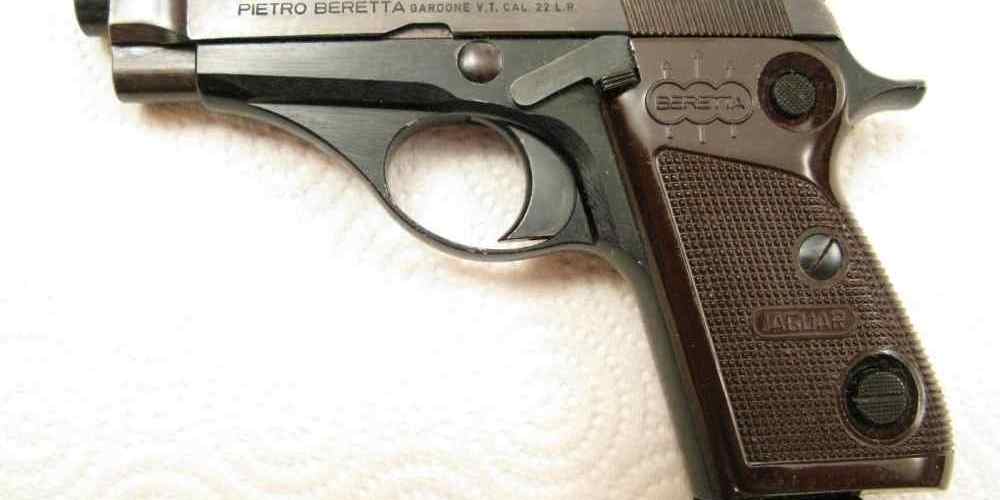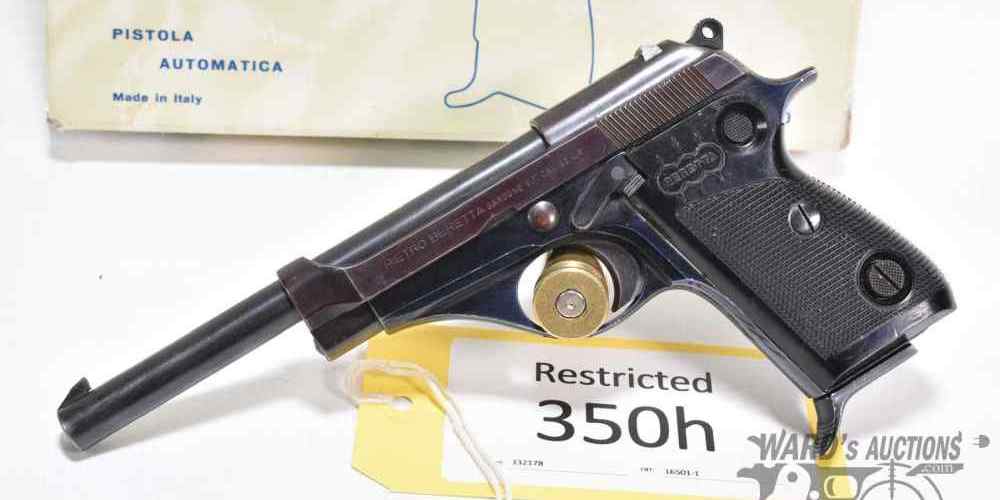“Ergonomics Meets Efficiency: Discover Your Perfect Semi-Auto Pistol Fit”
Evaluating Grip Design: The Key to Comfort in Semi-Auto Pistols
Ergonomics and Efficiency: Finding the Most Comfortable Semi-Auto Pistol
When it comes to selecting a semi-automatic pistol, comfort is not merely a luxury; it’s a crucial factor that directly impacts shooting efficiency and accuracy. The grip design of a pistol is the primary interface between the shooter and the firearm, and as such, it plays a pivotal role in the overall shooting experience. A well-designed grip can make the difference between a pistol that feels like an extension of the hand and one that is awkward and unwieldy. The quest for the most comfortable semi-auto pistol begins with understanding the nuances of grip design. The shape, size, and texture of the grip are all critical elements that contribute to how a pistol feels in the hand. A grip that is too large or too small can hinder proper trigger reach, which in turn can affect shot placement and control. Similarly, a grip with an inappropriate angle can cause wrist strain and discomfort, leading to fatigue during extended shooting sessions. Moreover, the texture of the grip is equally important. A grip with too much texture can be abrasive, causing discomfort or even injury over time, while too little texture might result in a lack of adequate friction, compromising the shooter’s hold on the pistol, especially under adverse conditions such as wet or sweaty hands. Manufacturers often strike a balance by offering modular grip panels or adjustable backstraps, allowing shooters to customize the grip to their preference. Another aspect to consider is the material from which the grip is made. Polymer grips are popular for their durability and resistance to environmental factors, but some shooters prefer the warmth and natural feel of wood or the solidity of metal. The choice of material can also affect the weight distribution of the pistol, which in turn influences how the pistol balances in the hand—a critical factor for quick and natural pointability. Ergonomics extend beyond the grip itself. The placement and operation of controls such as the magazine release, slide stop, and safety are integral to the shooting experience. These controls should be easily accessible without requiring the shooter to significantly adjust their grip. This accessibility ensures that the shooter can operate the pistol efficiently, maintaining a secure and comfortable hold throughout. In the pursuit of the most comfortable semi-auto pistol, it is essential to recognize that comfort is highly subjective. What feels perfect in one person’s hand may be uncomfortable for another. Therefore, personal testing is indispensable. Shooters are encouraged to handle and, if possible, fire a variety of pistols to gauge how different grip designs affect their comfort and control. This hands-on approach allows shooters to assess not only the static feel of the grip but also how the pistol behaves during recoil. In conclusion, the grip design is the cornerstone of comfort in semi-auto pistols. A well-designed grip enhances the shooting experience by improving control, reducing fatigue, and increasing accuracy. By carefully evaluating the shape, size, texture, and material of the grip, as well as the ergonomics of the pistol’s controls, shooters can find a semi-auto pistol that not only fits their hand but also elevates their shooting performance. Remember, the most comfortable semi-auto pistol is the one that feels like a natural extension of yourself, enabling you to shoot with confidence and precision.
Trigger Mechanics and Ergonomics: Enhancing Shooting Efficiency
Ergonomics and Efficiency: Finding the Most Comfortable Semi-Auto Pistol
When it comes to selecting a semi-automatic pistol, the comfort and fit of the firearm are just as critical as its mechanical reliability and accuracy. A well-designed pistol that aligns with the principles of ergonomics can significantly enhance shooting efficiency, leading to better performance whether on the range or in a defensive scenario. The interplay between trigger mechanics and the ergonomic design of a pistol is a key factor that shooters must consider to find the most comfortable and efficient firearm for their needs. Trigger mechanics are at the heart of a pistol’s operation. The trigger pull—the force required to discharge the firearm—along with the trigger travel—the distance the trigger moves until the firing pin is released—can greatly influence a shooter’s control and accuracy. A trigger with a smooth, consistent pull and a clean break can help shooters achieve quicker and more precise follow-up shots. Conversely, a trigger with a heavy, gritty pull can lead to shooter fatigue and decreased accuracy over time. Moreover, the reset point of a trigger, which is the point at which the trigger returns after firing and is ready to be pulled again, is crucial for rapid fire situations. A short and tactile reset allows for faster shot sequences, as the shooter can quickly determine when the trigger is ready to be engaged again without having to release it fully. This feature is particularly beneficial in competitive shooting sports or in high-stress defensive situations where every fraction of a second counts. Ergonomics, on the other hand, encompasses the overall design of the pistol as it relates to the human body. The grip angle, texture, and size are pivotal in ensuring that the pistol feels like a natural extension of the shooter’s hand. A grip that is too large or too small can hinder proper trigger reach, causing the shooter to adjust their grip awkwardly, which can lead to inconsistent shot placement and reduced control during recoil. Additionally, the placement of controls such as the magazine release, slide stop, and safety should be within easy reach without requiring the shooter to significantly shift their grip or alter their shooting stance. This accessibility allows for seamless operation of the firearm, minimizing the time and effort needed to perform reloads or clear malfunctions. The weight and balance of a pistol also contribute to its ergonomic profile. A well-balanced firearm can help shooters maintain a steady aim and manage recoil more effectively. The distribution of weight between the slide and frame should allow for quick target acquisition and transition, as well as enable the shooter to hold the firearm steady for extended periods without excessive fatigue. In the quest for the most comfortable semi-auto pistol, shooters should take the time to handle and test various models. Personal preference plays a significant role, as hand size and strength vary from person to person. It’s advisable to experience the trigger and ergonomic features firsthand through live fire or dry fire practice. This hands-on approach will reveal how well the pistol complements the shooter’s natural grip, stance, and trigger manipulation. Ultimately, the fusion of refined trigger mechanics with thoughtful ergonomic design culminates in a semi-automatic pistol that not only feels comfortable in the hand but also performs efficiently under various shooting conditions. By prioritizing these aspects, shooters can find a firearm that not only meets their needs but also enhances their shooting experience, leading to greater confidence and proficiency with their chosen sidearm.
Balancing Weight and Size for Optimal Handling in Semi-Auto Pistols
Ergonomics and Efficiency: Finding the Most Comfortable Semi-Auto Pistol
When it comes to selecting a semi-auto pistol, the balance between weight and size is a critical factor that can significantly impact handling and comfort. A well-designed firearm should feel like an extension of the shooter’s hand, allowing for intuitive operation and control. In the quest for the most comfortable semi-auto pistol, understanding the nuances of ergonomics and efficiency is paramount. The weight of a pistol plays a pivotal role in its handling characteristics. A heavier firearm can offer the advantage of reduced felt recoil, as the mass helps absorb some of the energy generated when the gun is fired. This can lead to improved accuracy and a more pleasant shooting experience, especially for those who spend extended periods at the range. However, the trade-off is that a heavier pistol can be more cumbersome to carry, particularly for concealed carry purposes or during long periods of use. Conversely, a lighter pistol is easier to handle and quicker to maneuver, which can be beneficial in dynamic shooting scenarios or for those with smaller hands or less upper body strength. The challenge with lighter pistols is that they can transmit more recoil to the shooter, potentially affecting shot placement and overall comfort. Manufacturers often combat this by incorporating advanced materials and innovative design features to distribute recoil forces more evenly. The size of the pistol is another critical aspect of its ergonomics. A larger grip may provide a more secure hold, which is essential for maintaining control during rapid fire sequences. However, for individuals with smaller hands, a large grip can be unwieldy and uncomfortable, leading to a less secure grip and reduced control. In contrast, a smaller grip can be more accommodating for a wider range of hand sizes, but it may not offer the same level of stability as a larger one. To find the optimal balance, manufacturers have introduced adjustable grips and interchangeable backstraps, allowing shooters to customize the grip size to their preference. This level of customization ensures that the pistol can be tailored to fit the shooter’s hand perfectly, enhancing control and comfort. The shape of the grip is also a factor in the pistol’s ergonomics. Contoured grips that follow the natural curvature of the hand can significantly improve the shooter’s grip and reduce fatigue. Texturing on the grip surface can provide additional traction, preventing slippage and improving control during rapid fire or in adverse conditions. The distribution of weight across the pistol is equally important. A well-balanced firearm will have its center of gravity located near the grip, allowing for a more natural point of aim and easier target acquisition. This balance helps the shooter maintain a steady aim and reduces the effort required to hold the pistol on target, which is particularly beneficial during extended shooting sessions. In conclusion, finding the most comfortable semi-auto pistol requires a careful consideration of both weight and size. A balance must be struck to ensure that the firearm is easy to handle, yet stable and controllable. By paying close attention to the ergonomics of the grip, the distribution of weight, and the overall design of the pistol, shooters can select a firearm that not only fits their hand but also enhances their shooting efficiency. With the right semi-auto pistol, the shooter can achieve a seamless integration of form and function, leading to a more enjoyable and effective shooting experience.
Customization Options for a Tailored Ergonomic Pistol Experience
Ergonomics and Efficiency: Finding the Most Comfortable Semi-Auto Pistol
In the quest for the perfect semi-auto pistol, ergonomics and efficiency stand at the forefront of considerations for both novice and experienced shooters alike. The journey to finding a firearm that feels like an extension of one’s hand is not only about comfort but also about enhancing shooting performance. Customization options abound, allowing individuals to tailor their pistols for a truly ergonomic experience that can lead to improved accuracy and control. The foundation of a comfortable semi-auto pistol lies in its grip. A proper grip is crucial as it affects every aspect of shooting, from the way the shooter interacts with the trigger to the management of recoil. Manufacturers have recognized this and now offer interchangeable backstraps and grip panels in various sizes and shapes. This allows shooters to adjust the circumference and angle of the grip to fit their hands perfectly. Some models even come with textured surfaces or finger grooves to provide a more secure and tactile feel, which can be particularly beneficial in adverse conditions. Beyond the grip, the trigger reach is another critical aspect of pistol ergonomics. The distance from the backstrap to the trigger must allow the shooter’s finger to naturally align with the trigger without straining. This alignment is essential for consistent trigger pulls and can be customized with aftermarket triggers that offer adjustable lengths of pull. By reducing the need to reposition the hand or stretch the finger, shooters can achieve a more natural and efficient shooting stance. The weight and balance of a pistol also contribute significantly to its ergonomics. A well-balanced firearm reduces fatigue and helps maintain steadiness during extended shooting sessions. Lightweight materials such as polymer frames and titanium components can reduce overall weight without sacrificing durability. Additionally, the distribution of weight can be fine-tuned by adding or removing modular weights in certain models, allowing shooters to find the perfect balance point that suits their shooting style. Sights are another area where customization can enhance ergonomics. Aftermarket sights come in various heights and profiles, enabling shooters to find the optimal sight picture quickly. Some prefer higher visibility options like fiber optic or tritium sights for low-light conditions, while others may opt for low-profile sights that reduce the risk of snagging when drawing the pistol. The choice of sights should complement the shooter’s vision and the intended use of the firearm. Lastly, the overall size and shape of the pistol can be adapted to the shooter’s needs. Compact models are available for those who prioritize concealability and ease of carry, while full-sized pistols offer a longer sight radius and potentially greater accuracy for competition or range use. The slide and frame can also be customized with cuts and serrations to improve grip and ease of manipulation, especially under stress or when wearing gloves. In conclusion, the path to finding the most comfortable semi-auto pistol is a personal journey that involves exploring a myriad of customization options. By focusing on the grip, trigger reach, weight, balance, sights, and overall size, shooters can create a tailored ergonomic pistol experience that not only fits their hand like a glove but also enhances their shooting efficiency. With the right adjustments, the semi-auto pistol becomes a natural extension of the shooter, leading to a more enjoyable and effective shooting experience.

The Role of Recoil Management in Semi-Auto Pistol Comfort and Efficiency
Ergonomics and Efficiency: Finding the Most Comfortable Semi-Auto Pistol
When it comes to selecting a semi-automatic pistol, comfort is not merely a luxury; it is a critical component that directly influences shooting efficiency and accuracy. The interplay between ergonomics and recoil management is at the heart of this relationship, and understanding this dynamic is essential for anyone looking to find the most comfortable semi-auto pistol for their needs. Ergonomics, the study of people’s efficiency in their working environment, extends to the design of firearms. A well-designed pistol grip, for instance, should feel like a natural extension of the shooter’s hand, allowing for intuitive control and minimal strain during operation. The angle of the grip, the texture, and even the materials used can significantly affect how the pistol sits in the hand and how the shooter interacts with it. A grip that is too large or too small, or at an awkward angle, can lead to improper hand placement, which not only reduces comfort but can also impact the shooter’s ability to manage recoil effectively. Recoil management is a critical aspect of shooting any firearm, especially semi-automatic pistols, which are often used in scenarios that require quick follow-up shots. The force of the recoil, which is the backward momentum experienced when a gun is fired, must be controlled to maintain accuracy and speed. A pistol that is ergonomically designed will naturally aid in this process, as it allows the shooter to maintain a firm and consistent grip, providing a stable platform for the firearm to cycle and return to the target. Moreover, the distribution of weight in a pistol can greatly influence how recoil is perceived and managed. A heavier firearm might absorb more recoil, reducing the amount of force transferred to the shooter’s hand and arm, while a lighter pistol, although easier to carry, may translate to a snappier recoil. The slide design and the recoil spring’s strength also play pivotal roles in how the energy from the discharged round is absorbed and dissipated. A well-balanced pistol will spread this energy evenly, minimizing muzzle flip and allowing for quicker realignment of the sights for subsequent shots. Additionally, the caliber of the pistol is a determining factor in both ergonomics and recoil management. Larger calibers typically produce more recoil, which can be more challenging to manage, especially for shooters with smaller hands or less experience. Conversely, smaller calibers may offer less stopping power but can be more comfortable to shoot over extended periods, making them an attractive option for those prioritizing comfort and efficiency. In the quest for the most comfortable semi-auto pistol, it is also important to consider the role of aftermarket modifications. Custom grips, adjustable backstraps, and recoil-reducing accessories can all be employed to tailor a pistol to an individual’s specific needs and preferences. These modifications can make a significant difference in how a pistol feels and performs, allowing shooters to achieve a level of comfort and efficiency that might not be possible with a stock firearm. Ultimately, finding the most comfortable semi-auto pistol is a personal journey that involves a careful consideration of ergonomics and recoil management. By paying close attention to how a pistol fits in the hand, how it balances, and how it handles the energy of firing, shooters can select a firearm that not only feels right but also enhances their shooting performance. Whether for competitive shooting, self-defense, or recreational use, the right combination of ergonomic design and efficient recoil management can lead to a more enjoyable and effective shooting experience.





